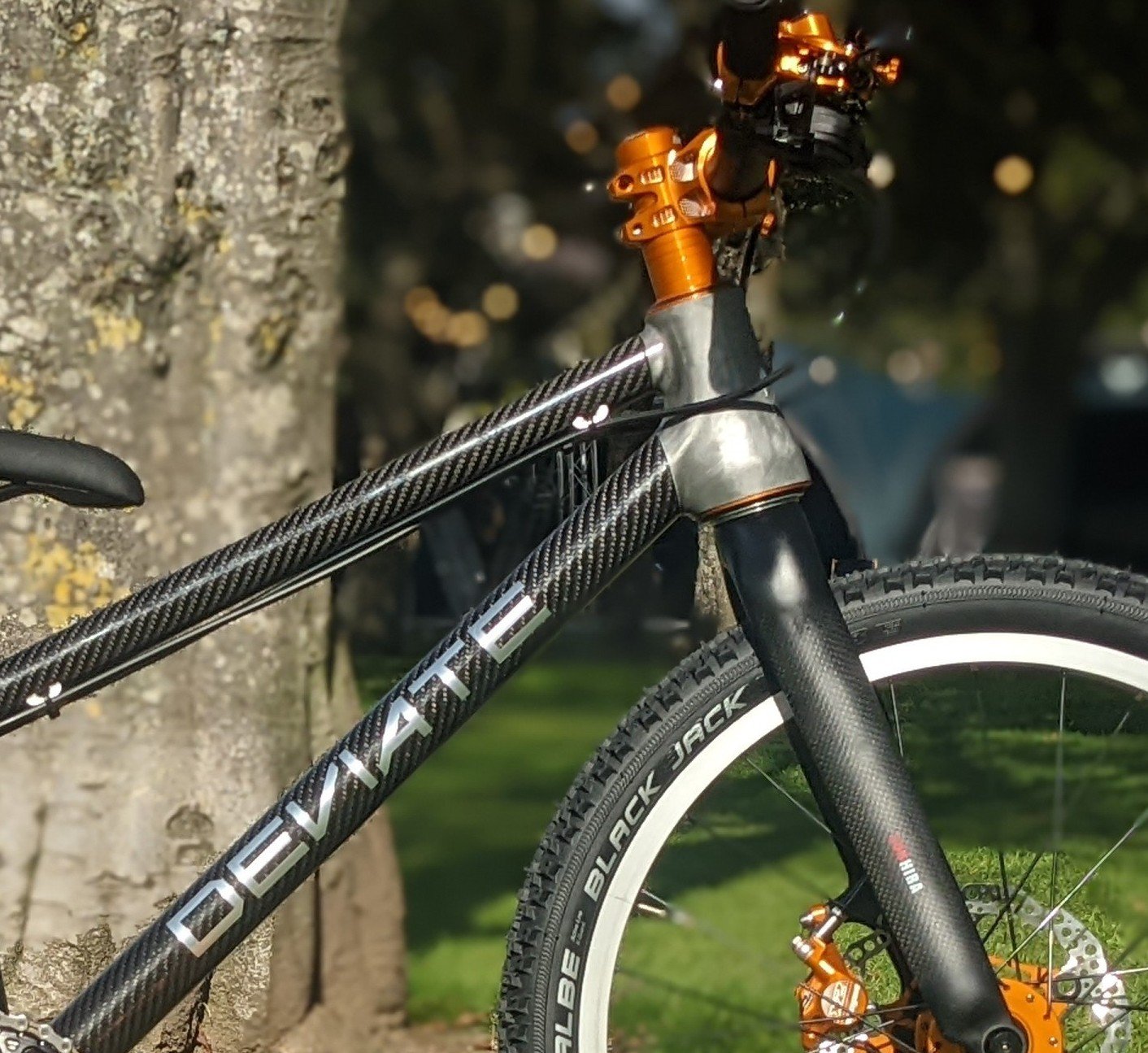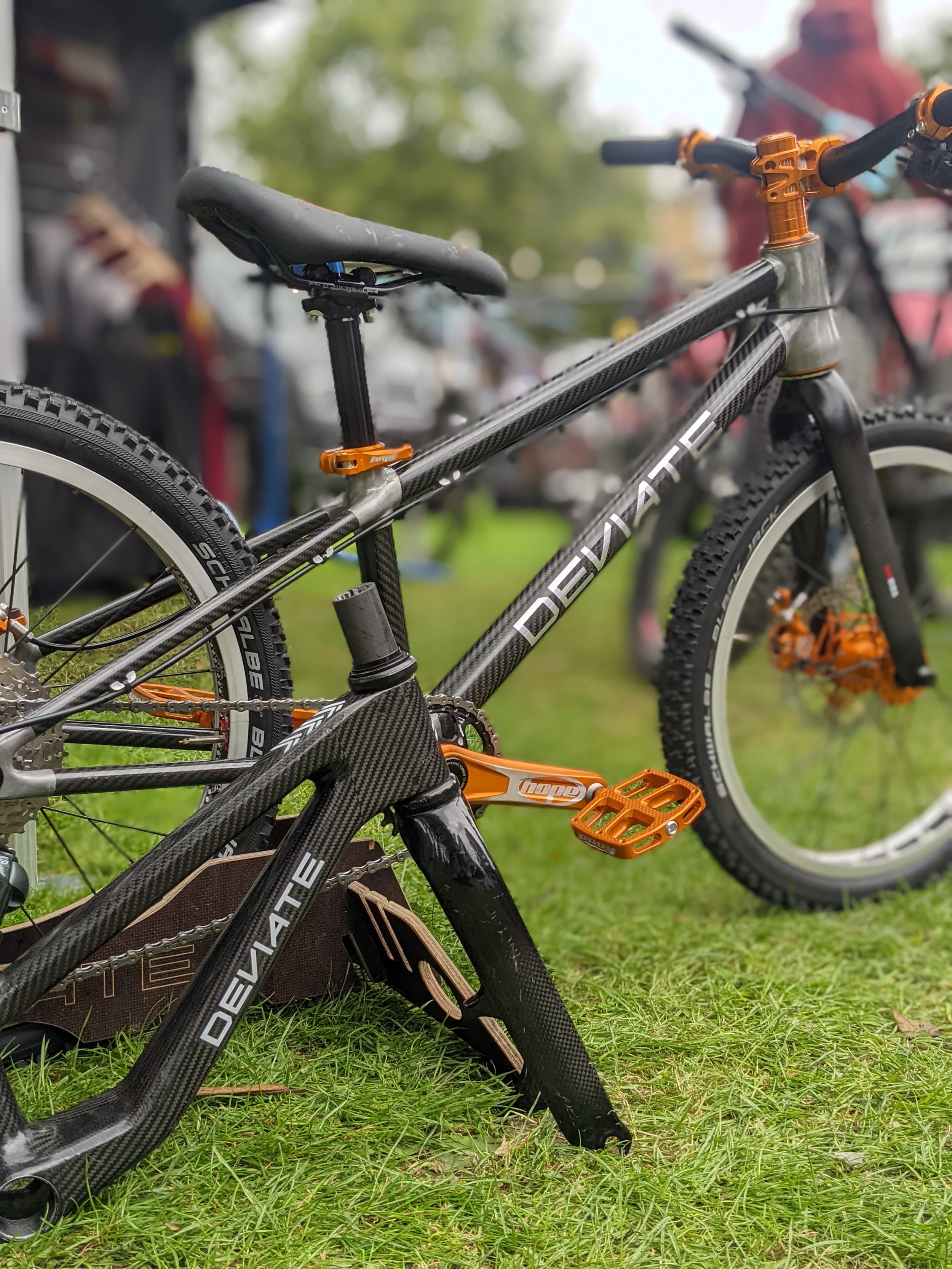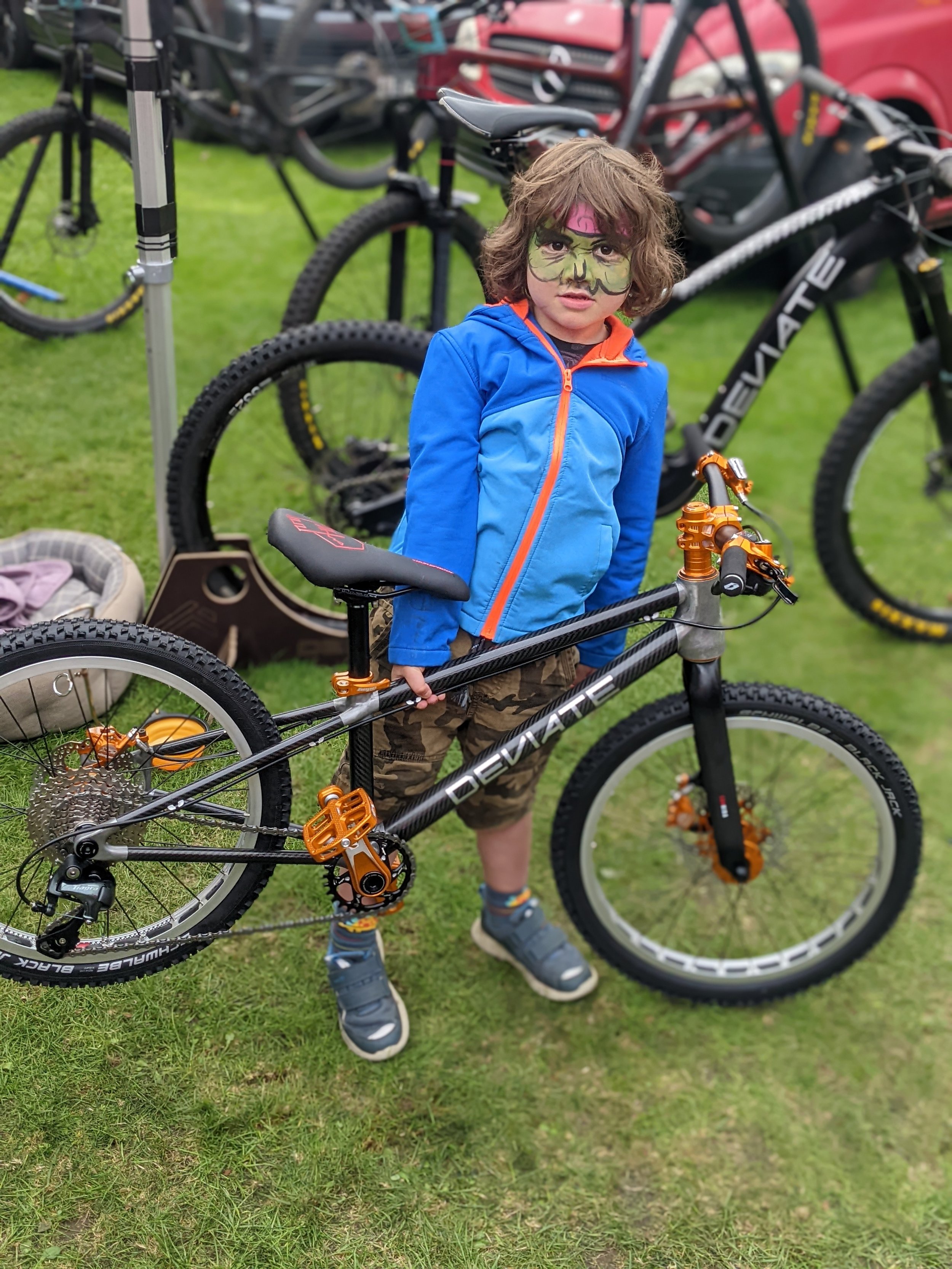
The hidden meaning behind the Deviate Selkie

If you found yourself at TweedLove this year, you might have noticed a bike nestled in the back of the Deviate stand.
It has all the look of a functional prototype. Aluminium. Carbon. It’s festooned with gorgeous components, largely courtesy of Hope. But… slightly smaller than the usual Deviate offerings.
In fact, considerably smaller.
For this is a Deviate bike for kids - the Selkie.
Tyke bling
The bike is dripping with top-drawer parts - largely from Hope, including their new extra-short 155mm cranks, brakes and hubs. Shifting is handled by Shimano, and the bike rolls on 20” trials rims shod with Scwalbe Blackjack tyres. The whole thing weighs in at an extremely creditable 6.2kg, when many bikes for kids can approach the weight of adults’ bikes.
But, as gloriously high-end as the componentry is, the frame is where the real interest lies, because of what it represents as much as what it is. But how did it come to be?
“I wanted something a bit more confidence inspiring for my daughter,” explained Deviate’s engineer and bike designer, Chris Deverson. “Her old bike was a conventional kids’ bike, but the handling was really nervous, and not confidence inspiring for her at all. I wanted something with more relaxed angles; a low bottom bracket; a bit less stretched out than she was - her old bike’s geometry just wasn’t fitting her well. And I’m the designer for my own bike company, so…”
The ‘wood butterfly bike’ drawn by Chris’s daughter is the inspiration behind the Selkie
Unconventional approaches
It’s *how* Chris went about fixing this problem that’s intriguing, though. Off-the-shelf carbon tubes are mated to 3d printed aluminium lugs. This is pretty advanced stuff, especially for a kids’ bike - is this an indication of the company’s future direction?
“I wanted to create a bike that was light, and quick to produce - and that I could perhaps try a few new techniques and processes on,” said Chris. “The design of the lugs, for example, was quite quick. I already had some other project designs, and I could scale them down to suit. And I mated the lugs to off the shelf carbon tubes. The whole thing was designed, manufactured and assembled in around three weeks.”
Printing lugs in aluminium is pretty unusual though - at least in the UK. In this country you would normally expect to see titanium or stainless steel, printed on vastly expensive machinery.
Titans of industry
“The main issue with 3D printing aluminium is that it’s less strong than, say, titanium by a factor of about four or five. So you have to design in an ability to take those loads, with thicker walls and so on. This is fine for a kids’ bike where the forces are smaller, but as soon as you start sticking heavy adults on there the forces get pretty difficult to manage pretty quickly, and the cost of printing time of those expensive machines soon starts to outweigh the saving gained using the cheaper material. For future Deviate projects I’d be looking to prove concepts quickly in aluminium because it’s cheaper and potentially faster, before we moved things on to something like titanium.”
And because of the scarcity of aluminium 3D printing in the UK, the Selkie’s lugs were made overseas. “Aluminium is not very widely printed in the UK because people don't see it as a high end material,” said Chris. “So if you're running a machine that costs more than £250,000, time on that machine costs a lot - so you want to get the best material strength from it as quickly as you can! But in China, they run cheaper machines; the cost of time on them is cheaper, and so it’s easier to print cheaper material like aluminium. So we had these printed there.”
That’s not to say that the technology won’t be coming to the UK, though - the industry is changing at a rapid rate, and fast aluminium additive 3D prototyping is becoming more established in this country.

Carbon might not be the only fruit
The tubes Chris used to link the lugs together with are off-the-peg carbon numbers - again, for simplicity and speed. The result is a sleek and smooth interface between lug and tube - but here, too, there is flexibility for improvement.
“The tube slots into the lug, and it’s bonded on,” said Chris. “But you have to be really careful to get the cuts absolutely perfect, which is quite time consuming. If we used this technology in the future we’d change the design so that there was a lip into which the tube fits - which would improve the aesthetics of the frame and increase the surface area to be bonded, increasing the strength of the join”.
As it stands, the off-the-shelf tubes the bike’s made with are perfectly strong enough for the task at hand, but they’re not quite strong enough for grown-ups.
“Off the shelf carbon tubes are too weak for adult usage in bikes,” said Chris. “But there are some very interesting things happening at the moment with other technologies which might prove to supplant carbon down the line”.
Future now
These new technologies have a variety of advantages. They’re easily scalable from small production volumes to much larger ones, they make prototyping much more straightforward, which in turn means a faster development time, it’s potentially more sustainable than carbon manufacture - and in theory, in-house Deviate production would be much more feasible than at present.
“Machine running costs and machine capital costs are the big factor with bringing this sort of technology in-house. The Ti powder is expensive too, but it’s the other two factors that take priority. So it’s very much a ‘down-the-line’ possibility: it’s not something we’d be looking to do next week!”
Such ease and speed of production might facilitate something else - perhaps in the future we’d be looking at the option of truly bespoke, custom Deviates, with key geometries tailored to suit the preferences of the individual rider.
So, as sweet a ride as the Deviate Selkie is, don’t expect to see one under any kids other than Chris’ any time soon - but if you squint just a little, you might just be able to make out the Deviates of the future.










